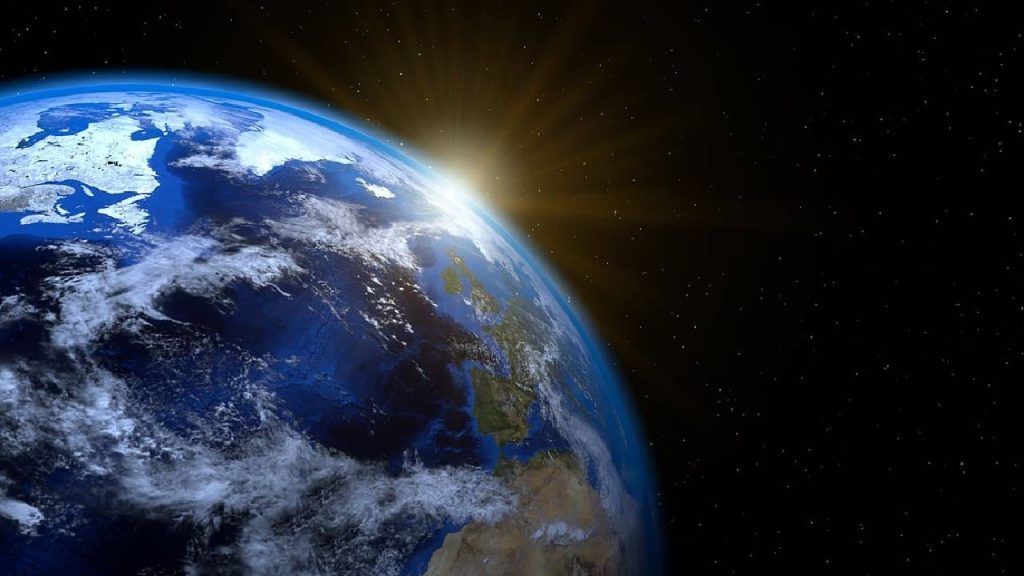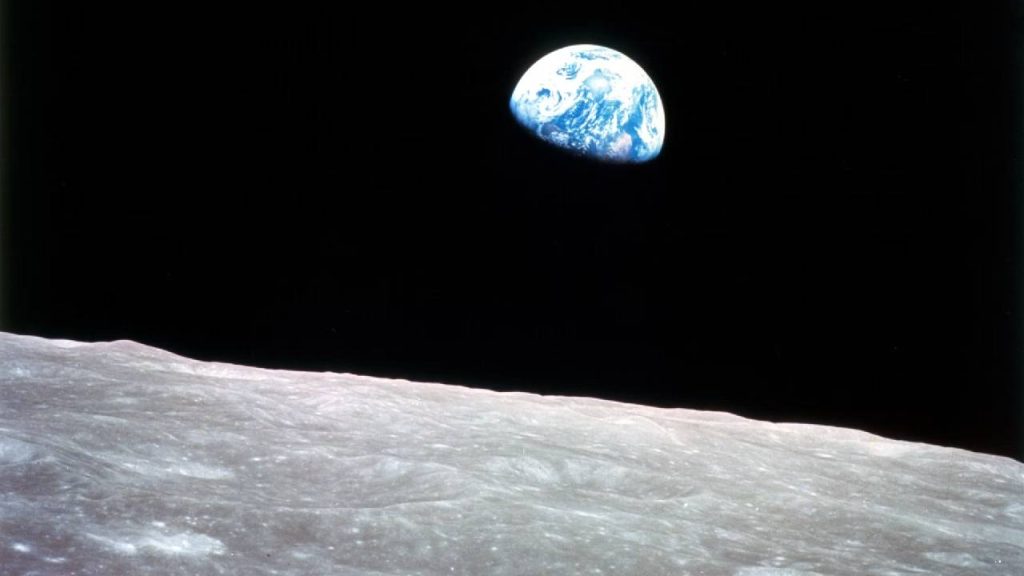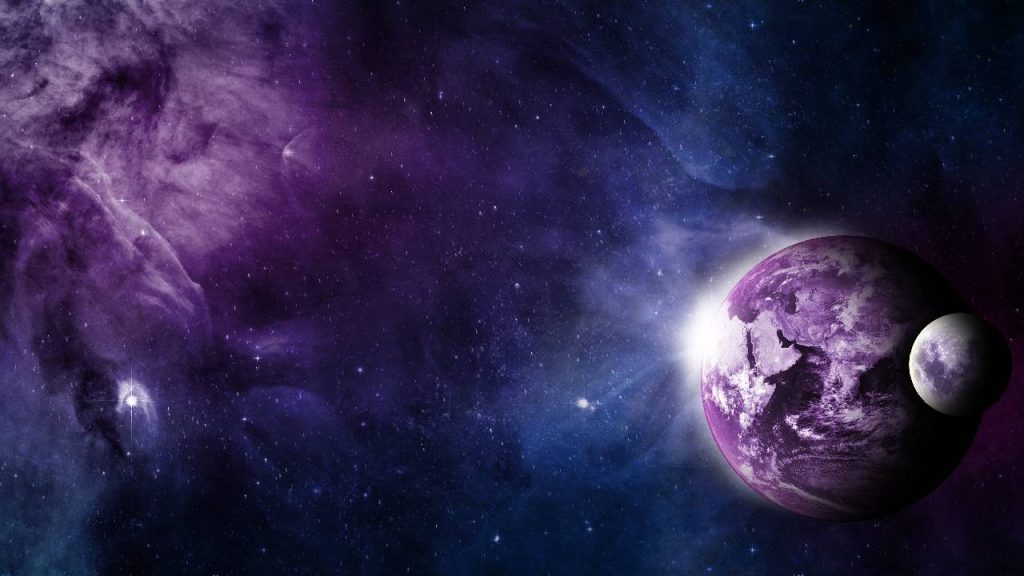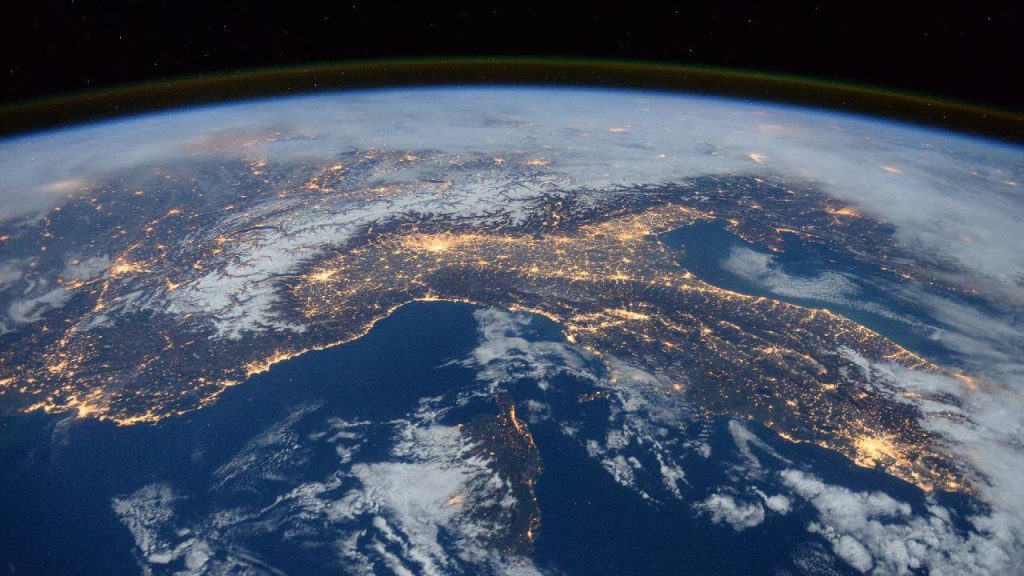The history of our planet, Earth, is a captivating journey spanning billions of years. From its formation as a molten rock in the early solar system to the complex and diverse ecosystems we know today, the history of the earth is a tale of dynamic change, evolution, and resilience.
Our story begins approximately 4.6 billion years ago when the Solar System was just a swirling cloud of dust and gas. Within this cosmic dance, a gravitational collapse led to the formation of the Sun at its center.
Around the young star, a spinning disk of material formed, eventually coalescing into the planets, including Earth. Initially, our planet was a searing, molten sphere bombarded by asteroids and comets.
In this article, we will embark on a remarkable voyage through geological epochs, mass extinctions, and the emergence of life, all contributing to the intricate narrative of our world’s history.
What Does the History of the Earth Encompass?
The history of Earth spans 4.6 billion years, from its formation through the fiery Hadean Eon to the emergence of life in the Archean Eon.
It features geological changes, climate shifts, and the rise of diverse life forms, culminating in the advent of Homo sapiens.

Early History
The birth of our planet
The history of Earth is like an epic tale that unfolds over 4.6 billion years. It all started when tiny particles and materials in a vast cloud of gas and dust in space began to come together. Think of it as the slow and patient building of something enormous, like a colossal Lego structure taking shape over millions of years.
The Hadean Eon — a fiery beginning
Around 4.6 billion to four billion years ago, during a period called the Hadean Eon, Earth went through a rather brutal phase. It was a scorching-hot, inhospitable place, nothing like the home we know today.
Imagine a world where temperatures soared and it was bombarded by countless space rocks and debris. The surface was a molten sea of rock, and the air was thick with volcanic gases. Life, as we know it, would have found it impossible to survive in such an environment.
The Moon’s arrival
There was a remarkable event during this tumultuous time — the creation of our Moon. Scientists believe that a massive object, nearly the size of Mars, collided with the young Earth.
The sheer force of this collision sent a tremendous amount of material into space, and over time, this debris came together to form the Moon.
This dramatic event had a profound impact on Earth. It affected the way our planet spins, caused significant changes in its early climate, and even played a role in shaping our oceans and tides.
Understanding these early chapters of Earth’s history gives us a deeper appreciation for the planet we call home. It’s a testament to the incredible journey Earth has undergone, from its fiery beginnings to becoming the unique and hospitable place that sustains life today.

Major Events in Earth’s History
Earth’s history is a captivating tale filled with pivotal events that have shaped the world as we know it. Let’s delve into some of these remarkable moments, organized chronologically:
- Origin of life
The emergence of life on Earth is a profound mystery that scientists are still unraveling. It likely began during the Archean Eon, around 3.8 billion years ago, when simple, single-celled organisms appeared in the oceans.
These microscopic life forms, driven by the basic instinct to survive and reproduce, laid the foundation for the diversity of life we see today.
- Evolution of oxygen in the atmosphere
One of the most significant transformations in Earth’s history was the gradual buildup of oxygen in the atmosphere. Early on, our planet had an atmosphere dominated by gases like methane and carbon dioxide. However, the emergence of photosynthetic organisms, primarily cyanobacteria, started releasing oxygen as a byproduct.
This process, known as the Great Oxygenation Event, occurred around 2.4 billion years ago and dramatically altered the composition of Earth’s atmosphere. It not only paved the way for oxygen-breathing life forms but also left a lasting imprint on our planet’s geology.
- Mass extinctions
Earth’s history has been punctuated by several mass extinction events, each with its own unique causes and consequences. These events, including the Permian-Triassic and Cretaceous-Paleogene extinctions, led to the disappearance of numerous species.
While mass extinctions are devastating, they also open ecological niches for new life forms to evolve, ultimately shaping the course of evolution.
- Development of continents, oceans, and complex life
The dynamic interplay of tectonic forces has continually reshaped the Earth’s surface over billions of years. During the early stages of Earth’s history, continents began to form as landmasses drifted and collided.
These landmasses gave rise to mountain ranges and vast continents, while oceans expanded and receded. This ongoing geological process, driven by plate tectonics, has sculpted our planet into its current form, making it a dynamic and ever-changing world.
As Earth evolved, life followed suit, becoming increasingly complex over time. This development can be traced back to the Archean Eon, around 3.8 billion years ago, when simple, single-celled organisms appeared in the oceans.
These microscopic life forms, driven by the basic instinct to survive and reproduce, laid the foundation for the diversity of life we see today. Over eons, life continued to diversify, giving rise to multicellular organisms and a multitude of species.
- Plate tectonics and mountain building
The movement of Earth’s tectonic plates has played a crucial role in shaping the planet’s landscape. Plate tectonics have led to the formation of mountain ranges, the opening and closing of oceans, and the redistribution of continents.
- Human evolution
The evolutionary history of hominids traces the path from early primates to the emergence of Homo sapiens. This remarkable journey highlights the development of human-like features, and cognitive abilities, and the eventual spread of humans across the globe.
- Colonization of land
Life’s transition from water to land was a momentous event. It gave rise to terrestrial ecosystems and paved the way for the colonization of Earth’s diverse environments, from deserts to rainforests.
- Impact events
Throughout Earth’s history, significant asteroid or comet impacts have left lasting marks. These events have had profound effects on the planet’s climate, ecosystems, and even the course of evolution.
These major events in Earth’s history are like chapters in an epic saga. They remind us of the planet’s incredible resilience and the enduring dance of life and geology that continues to unfold.

Geological Timeline of the Earth
The history of our planet is like a long and captivating storybook, with each chapter representing a different period in Earth’s development. Let’s explore the geological timeline of the Earth, from its fiery beginnings to the rise of complex life forms:
Hadean Eon
The Hadean Eon, roughly spanning from 4.6 billion to 4 billion years ago, was a tumultuous time. Picture a planet in chaos, bombarded by asteroids and comets, and scorching hot.
It was an era of intense volcanic activity, with molten rock covering the surface. Earth’s first oceans began to form during this eon, as temperatures cooled down just a bit.
Archean Eon
The Archean Eon, starting around 4 billion years ago and lasting until about 2.5 billion years ago, witnessed the birth of life on our planet.
Simple, single-celled organisms appeared in the oceans, laying the foundation for all life forms to come. The atmosphere was rich in methane, but some remarkable microbes began producing oxygen through photosynthesis.
Proterozoic Eon
The Proterozoic Eon, spanning from 2.5 billion to 541 million years ago, was a time of significant change. Earth’s continents started to take shape, forming land masses that looked different from today.
But it was a crucial step toward the continents we know. As oxygen levels in the atmosphere increased, life diversified, and more complex organisms emerged.
Phanerozoic Eon
The Phanerozoic Eon, the most recent eon, began around 541 million years ago and continues to this day. It’s like the action-packed finale of Earth’s story. This eon is divided into three major eras:
- Paleozoic Era
The Paleozoic Era, from 541 million to 252 million years ago, saw incredible changes. Life exploded in diversity, with the first fish, insects, reptiles, and eventually, dinosaurs appearing. It was a time of continental collisions and mountain-building events. The era ended with a mass extinction event that wiped out many species.
- Mesozoic Era
The Mesozoic Era, from 252 million to 66 million years ago, is often called the “Age of Dinosaurs”. It’s when these magnificent creatures ruled the land. The breakup of the supercontinent Pangaea led to the formation of modern continents. The era ended with another mass extinction event, which included the demise of the dinosaurs.
- Cenozoic Era
The Cenozoic Era, from 66 million years ago to the present, is also called the “Age of Mammals”. This era witnessed the rise of mammals, including our own ancestors. Earth’s climate cooled, leading to the development of ice caps and glaciers. It’s the era in which we currently live, marked by the diversity of mammals and the dominance of humans.
Each eon and era in Earth’s geological timeline has left its mark, shaping our planet’s landscapes, climate, and the evolution of life. It’s a story of resilience, adaptation, and the incredible journey of our home, Earth.
Climate and Environmental Changes
Earth’s climate and environment have undergone significant transformations over its long history. From ice ages to the influence of human activity, these changes have shaped the planet in various ways:
Ice ages
Ice ages, also known as glacial periods, have occurred several times in Earth’s history. During these extended periods of colder climate, vast ice sheets covered significant portions of continents.
The most recent ice age, the Pleistocene Epoch, began about 2.6 million years ago and saw repeated advances and retreats of glaciers. These ice ages had a profound impact on landscapes, sea levels, and the evolution of life.
Climate shifts
Earth’s climate has experienced numerous shifts, ranging from warmer periods to ice ages. These shifts are often driven by factors such as variations in Earth’s orbit, solar radiation, and volcanic activity.
For example, the Medieval Warm Period (approximately 950 to 1250 AD) and the Little Ice Age (approximately 1300 to 1850 AD) were notable climate shifts in more recent history. These variations have affected ecosystems, agriculture, and human societies.
Impact of human activity
In the modern era, human activity has become a significant driver of environmental change. Activities such as deforestation, industrialization, and the burning of fossil fuels have led to an increase in greenhouse gas emissions, primarily carbon dioxide.
This has resulted in the enhanced greenhouse effect and global warming, leading to climate change. The consequences of human-induced climate change include rising temperatures, sea-level rise, more frequent extreme weather events, and disruptions to ecosystems.
Frequently Asked Questions
How do scientists determine the age of the Earth and the events in its history?
Determining the age of Earth and its history relies on various scientific methods. Radiometric dating, which measures the decay of radioactive isotopes in rocks, provides crucial information about the ages of Earth’s layers and the materials they contain.
By studying rock layers and fossils through stratigraphy, scientists create a chronological record of Earth’s past. Additionally, ice cores, tree rings, and sedimentary records offer insights into climate and environmental changes throughout history.
What is the evidence for the first life forms on Earth, and how did they evolve?
The evidence for the first life forms on Earth comes from fossilized microorganisms found in ancient rock formations. Stromatolites, layered structures created by microbial communities, are among the earliest examples. These life forms likely appeared during the Archean Eon, around 3.8 billion years ago.
They evolved from simple, single-celled organisms into more complex life forms through processes like mutation, natural selection, and the emergence of photosynthesis, which released oxygen into the atmosphere.
How have plate tectonics influenced the Earth’s continents and landscapes over time?
Plate tectonics is a fundamental geological process that has significantly shaped Earth’s surface. It involves the movement of Earth’s lithospheric plates, which can collide, separate, or slide past each other.
Plate boundaries are often hotspots of geological activity, leading to the formation of mountain ranges, earthquakes, and volcanic eruptions. Over millions of years, these processes have created continents, oceans, and diverse landscapes.
The continents have drifted, merged, and broken apart, influencing climate, ocean circulation, and the distribution of life forms on our planet. Plate tectonics continues to reshape the Earth’s surface and plays a vital role in its ongoing geological evolution.

Conclusion
Earth’s 4.6 billion-year history is a captivating saga of transformation and resilience. From its fiery birth during the Hadean Eon to the emergence of life in the Archean, and from mass extinctions to the development of continents, oceans, and complex life, our planet’s story is one of perpetual transformation.
Plate tectonics and the evolution of species, including humans, have left indelible marks on Earth’s landscape and biodiversity. The human-induced events continue to shape our world even today.
As we reflect on the history of the earth, we gain a profound appreciation for its ability to adapt and evolve. Our planet’s story is a testament to its dynamic nature and the intricate interplay of geology, climate, and life. It reminds us of our responsibility to protect and preserve the unique and fragile world we call home.
